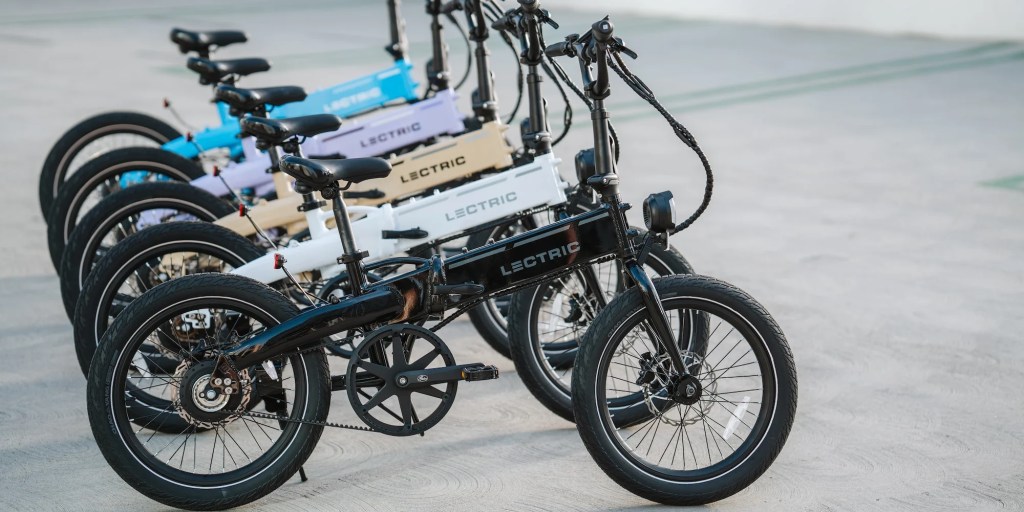
There’s a reason the phrase “you get what you pay for” has stuck around for so long – because it’s usually true. And when it comes to electric bikes, that old saying might be more important than ever.
Sure, everyone wants a deal. Prices are increasing, workers are treated worse than ever, and the immediate future of the economy seems to depend at least partially on how well a golf game goes this weekend. So I don’t blame anyone for wanting to find a bargain when it comes time to shop for the best alternative to buying an expensive car.
The problem is that a lot of people don’t realize what they’re sacrificing for those low prices, and the fact that automotive media seems to have finally woken up to electric bikes is only making that worse with dangerous expectations that don’t align with reality.
Now, add in the fact that these days, it’s easier than ever to find an e-bike online for under $600. Scroll through Amazon, Walmart, or even eBay, and you’ll see a flood of lesser-known electric bikes with flashy listings, bold promises, and suspiciously low prices. At first glance, they can seem like a great deal – especially if you’re just dipping your toe into the world of e-bikes and don’t want to spend over a grand. But here’s the truth: that bargain-bin e-bike might cost you a whole lot more in the long run, whether it’s in repairs, hospital bills, or just frustration.

Now I’m not saying you need to spend a fortune. Sure, if you have several thousand dollars on hand then I’d put you on a beautifully made Priority e-bike for city commuting or an ultra-rugged Tern for carrying cargo and children. But most of us aren’t looking to spend $3,000 on an electric bicycle, and that’s ok. You can still get a decent e-bike for a lot less, but scrimping too much can lead to a whole host of future problems.
Let’s start with what may be the most serious issue: battery safety. The battery is the heart of any electric bike, and it’s also the component most likely to cause real danger if it’s poorly made. Many of these ultra-budget e-bikes aren’t certified to UL 2849 (e-bike systems) or UL 2271 (lithium-ion battery) safety standards. That’s a big red flag.
UL certification means a battery has been rigorously tested for things like short-circuit protection, thermal runaway resistance, water ingress, and more. When you skip those safety tests to cut costs, you’re gambling with something that literally sits between your legs. That’s not an area I’d want to take that chance on.
Fires caused by uncertified or damaged e-bike batteries have become a growing concern, especially in dense urban areas. While they are still rare occurrences in the broader e-bike market, they are almost exclusively caused by non-certified batteries. Cities like New York have already moved to ban the sale of e-bikes without UL-listed batteries for precisely this reason. And while these fires are rare relative to the number of bikes out there, they tend to involve the cheapest models on the market – often the ones with questionable quality control and little to no brand accountability.

But battery issues are just the beginning. The rest of the bike matters too, and that’s where a lot of these low-cost options fall apart… literally. Most $400 to $600 e-bikes are built with generic components from unknown suppliers, slapped together in factories that don’t perform long-term frame durability testing or ensure consistent torque specs on assembly lines.
I’ve personally bought bikes in this price range (you know, for science) that arrived with brakes that weren’t fully connected, bolts that weren’t tightened, and wheels out of true right out of the box.
These bikes often use plastic components, pot-metal crank arms, cheap suspension forks that do nothing but squeak, and undersized brake rotors that struggle to stop a 65 lb (30 kg) e-bike, let alone one with a rider onboard. That’s not just an annoyance – it’s a serious safety issue.
E-bikes move faster and carry more weight than traditional bicycles, which means every component needs to work harder. If the brakes fade, the wheels wobble, or the frame starts to flex in ways it shouldn’t, you’re putting your safety at risk. We’ve seen e-bikes break in half before, and it isn’t pretty.

Then there’s the ride quality. Cheap e-bikes often use unbranded motors and basic square wave controllers that provide jerky acceleration, sluggish pedal assist, and otherwise poor performance. The battery may say “48V 10Ah” but only deliver half that in real-world use. Range claims are frequently exaggerated (though to be fair, much of the industry is guilty there), and there’s often no support line to call if something goes wrong. Once the bike arrives at your door, you’re on your own.
All of this isn’t to say that every low-cost e-bike is a death trap. There are exceptions. Lectric’s XP Lite 2.0 is an excellent example of a sub-$800 e-bike that punches way above its weight class. It comes from a reputable company, includes safety-focused features, is UL-compliant, and has a real US-based support team behind it. Lectric isn’t alone, as there are also good entry-level options with solid reputations and better-than-average quality bikes out there, though much of the industry would agree that Lectric is leading considerably in that regard. But keep in mind that bikes like the XP Lite 2.0 are the outliers – not the norm.
And while $800 isn’t exactly a hard and fast rule, I’ve rarely seen something below that figure that I’d be comfortable putting my mom on.

The biggest problem is that it’s hard for new buyers to tell the difference. When every product listing looks polished and every spec sheet claims 40 miles (65 km) of range and “powerful 500W motor,” it’s easy to get lured into a bad purchase.
But an e-bike isn’t a blender. It’s a transportation vehicle. You’re trusting it to carry you at 20+ mph (32+ km/h) through traffic, down hills, and across intersections. Saving a few hundred bucks at checkout probably isn’t worth it if the bike can’t stop properly… or worse, catches fire in your garage.
If your budget is tight, that’s understandable. But rather than buying the cheapest e-bike you can find today, consider saving a bit longer, buying used from a reputable brand on places like Facebook Marketplace or Cragislist, or looking for refurbished models with some kind of warranty. And whatever you do, make sure the battery is certified, the brand has real customer support, and you’re not putting your safety in the hands of a mystery vendor with a generic Gmail address.
Electric bikes are incredible tools for transportation, fun, and freedom. But when they’re made with the wrong priorities – cutting cost at all costs – they stop being tools and start being liabilities. Do your homework, buy from a reputable company, and don’t let the price tag blind you to what really matters: your safety.
Read more: Want to see a list of GOOD yet inexpensive e-bikes? Here are the best we’ve tested under $1,000
FTC: We use income earning auto affiliate links. More.











